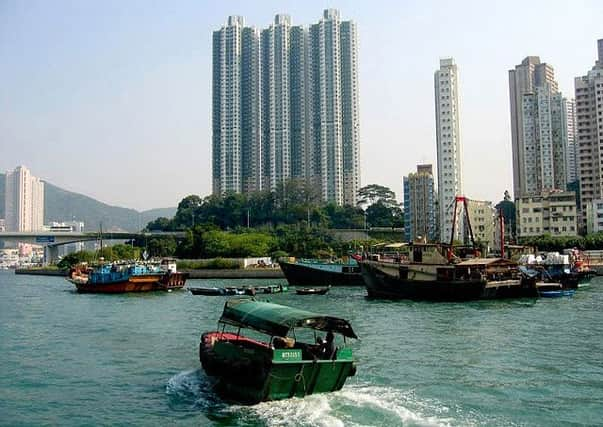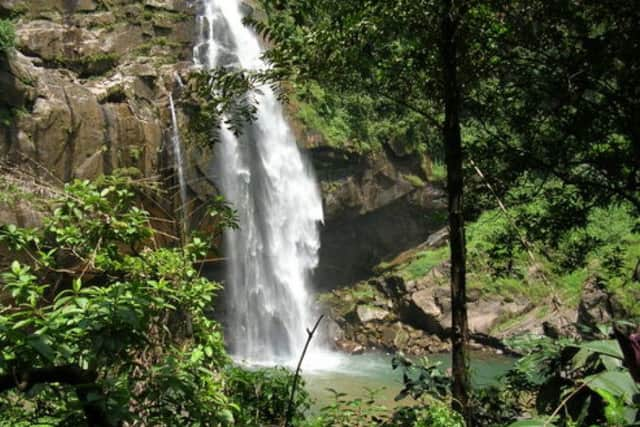No place like home? Six Aberdeens around the world


ABERDEEN, SOUTH AFRICA
It is said that nothing ever happens here but the passage of time, but it wasn’t always that way.
This was the cradle of the Dutch Reformist Church and named after Andrew Murray Sr, a pioneer minister from a pious Aberdeenshire family who went on to become an evangelical leader of South Africa in the 18th century.
Advertisement
Hide AdAdvertisement
Hide Ad

Murray’s zeal is said to have transformed this frontier country and united large numbers of people under a common faith. However, the DRC became known as the official religion of the National Party during the Apartheid era and was perceived to have actively promoted racial divisions throughout the country.
Murray’s sons carried on the ministry after being sent home to study at Aberdeen Grammar School and Marischal College.
NOW
Aberdeen, with a population of 7,300, lies in the semi-desert Great Karoo in the shadows of the Camdeboo Mountains. The DRC church on the High Street has the tallest church steeple in South Africa. Its architecture is Victorian with the residents older, retired creative types. Aberdeen once boasted the biggest privately owned zoo in the country.
ABERDEEN, FREETOWN, SIERRA LEONE
This is one of the affluent corners of Sierra Leone but it has a dark connection to the north-east. From the harbour you can still get a boat to Bance Island, a slaving fort around 20 miles down river, where 12,000 men, women and children were sold to slaving ships during the 18 century. Bance Island was bought in 1748 by Sir Alexander Grant, Seventh Baronet of Dalvey, near Forres. He went into partnership with Richard Oswald of Caithness and their venture was partly paid for by with funds from Oswald’s wife, Mary Ramsay. She inherited the family fortune from her father, Alexander Ramsay of Laithers, near Turriff, who had planting and business ventures in Jamaica.
NOW
Around 10 minutes in car from the centre of Freetown, it’s where its richer residents and expats come to play with its beachfront bars, restaurants and golf course. Aberdeen is also home to a large fishing community, who work as far as the Liberian coast and Guinea in the south. In February 2015, around 20 fisherman were struck by Ebola. The World Health Organisation said they may have been caused by an unsafe burial. Clashes with police broke out last year after residents claimed not enough was being done to protect the area from the spread of the disease.
ABERDEEN FALLS, SRI LANKA
There was a steady stream of north-east speculators, businessmen and the well-educated who made a trail to Sri Lanka, once known as Ceylon, during the colonial years.
Many arrived as doctors and engineers but it was the fertile, mountainous tea-growing areas that made the fortune for many.
Amongst them were James Littlejohn, born 1868 in Aberdeen, who headed to Sri Lanka to learn tea planting under John Greig of the Macduff Estate. Both became major figures in the tea trade.
Advertisement
Hide AdAdvertisement
Hide AdJames Taylor, considered the father of the Ceylon tea industry and brought industrial scale production to the country, was raised in Laurencekirk, Aberdeenshire,
Aberdeen Grammar School offered a key supply of men to the former colony. In 20th Century Impressions of Ceylon, by Arnold Wright, it noted “the well known seat of learning which has sent so many famous men to all parts of the world.”
In an account of the British Lions rugby tour of 1950, player Gus Black noted the crowd at a Ceylon match “all seemed to have been at Aberdeen Grammar School”.
Documents also show that several high profile doctors and engineers from Sri Lanka went to Aberdeen University to take degrees, such was the link between the two places.
NOW
Aberdeen Falls is a 98m high waterfall near Ginigathena, in the Nuwara Eliya District of Sri Lanka, the heart of the tea-growing district which is known for its cooler highland climate. Today, tea tours pitched on the comforts of colonial life continue to draw visitors to the area. The main town of Nuwara Eliya - dotted with remnants of the colonial era, is where Sri Lankans like to wind down, particularly at horse races and car rallies held during April, the month of flowers and festival time.
ABERDEEN, ST ELIZABETH, JAMAICA
This former sugar planation was named Aberdeen by its owner, slave owner Alexander Forbes, who grew up in the Granite City. After emancipation in 1838 the former slaves founded their own town on the edge of the estate, which is today still called Aberdeen. Other Jamaican plantations with a north-east link included the Monymusk Estate of the Grants of Monymusk; The Burn Estate of John Shand who owned The Burn House near Fettercairn; and the Dalvey Estate of Sir Alexander Grant of Dalvey, near Forres - the same man who bought Bance Island.
In 1817 a government slave census recorded that there were almost 300 slaves named Aberdeen in the British West Indies.
NOW
Only a few hundreds people live in Aberdeen, a small settlement in Cockpit County, a thickly wooded and mountainous areas, where former slaves fled to their safety. St Elizabeth Parish has around 148,000 residents with its economy driven by bauxite mining, fishing and tomato country. The Appleton Rum factory, around three miles from Aberdeen, has now put the area on the tourist map.
Advertisement
Hide AdAdvertisement
Hide AdLast year, Aberdeen Primary and Junior High School, which has around 230 pupils, got a major refurbishment to fix its leaking roofs, poor toilets and bad playing areas last year.
It is said St Elizabeth has more people of mixed ancestry than any other part of the island.
ABERDEEN, HONG KONG
Aberdeen in Hong Kong was named in memory of George Hamilton-Gordon, 4th Earl of Aberdeen and former prime minister from 1852 and 1855. Lord Haddo, as he was also known, was born in Edinburgh. In 1800, he wet to Cambridge University but stayed for only two sessions. He was still awarded his degree, however, as noblemen could graduate without sitting an exam.
After a short career in the diplomatic service following the death of his wife, he entered politics and became Foreign Secreatry to the Duke of Wellington despite having little experiece. He served as prime minister after forming a coalition of Whigs, Peelites and radicals. He took Britain into the Crimean War and retired from politics not long after.
NOW
One of the key tourist centres of Hong Kong, Aberdeen is defined by its harbour and gleaming skyscrapers which have long been favoured by the middle classes. They overlook a community living on traditional junks. A typhoon shelter on the south side of Hong Kong Island is also a popular seafood dining spot and home to Jumbo Kingdom, one of the world’s largest floating restaurants. More than 30 million people have dined there since it opened in the 1970s. Aberdeen Harbour, which can seat up to 2,300 diners at a time, was used as a location for Bruce Lee’s classic martial arts move, Enter The Dragon.
ABERDEEN, WASHINGTON
Samuel Benn and his wife Martha had a big idea in 1868. They saw the potential to build a new town at the mouth of the Wishkah River, where her father owned land. They moved and spent decades engineering their vision. Benn, an Irish immigrant from New York, had a salmon saltery. By the late 1800s, Aberdeen had half-a-dozen buildings with a population of “17 whites and 13 Chinese” mainly employed at a cannery to which Benn gave free rent. Aberdeen’s first buildings kept falling into the water, but by 1910, with the arrival of lumber and shingle mills, the population grew to 17,000. The supply of unskilled labour drew immigrants from around the world.
NOW
It is most famously the birthplace of Nirvana singer Kurt Cobain and the town sign carries the catchline Come as You Are, in tribute to one of his songs.
Cobain described Aberdeen as a place “full of bigoted rednecks” and his negative views of the town - plus his drugs use - have made civic leaders reluctant to celebrate the singer’s connection.
Advertisement
Hide AdAdvertisement
Hide AdA proposal to rename a bridge over the Wishkah River after the singer - which he mentioned in Something In The Way, and where Cobain reportedly slept rough – was scrapped in 2011.
However, a memorial park named after the Nirvana frontman near the bridge is a modest tourist attraction.
Washington suffered with the loss of its many major sawmills in the 1970s and 1980s as its fishing industry declined. However, tourism and shopping underpin the town’s new economy.